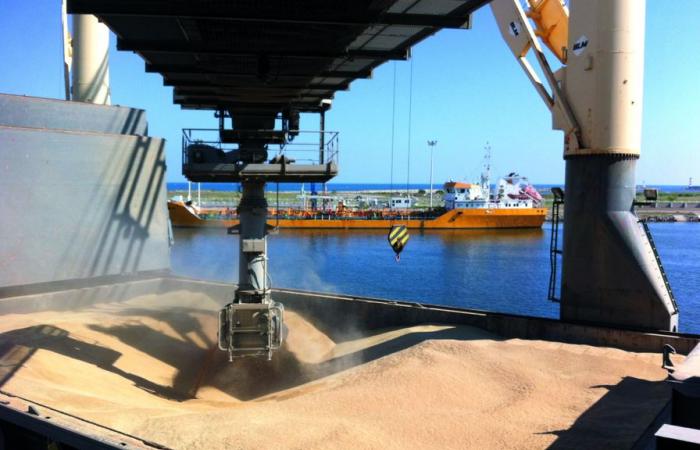At the port of Rouen, the main outlet for hexagonal wheat, the price of the first category was 242 dollars per tonne, conceding two dollars compared to half of April. For the past year, lessons have been fluctuating between 223 and 277 dollars per ton.
During the past week, three ships loaded with French wheat left the port of Rouen to Morocco, taking a total of just over 100,000 tonnes, according to available port data consulted by Barlamane.com.
This movement testifies to the strategic importance that Rabat retains for the French cereal export despite the generalized reflux of the prices observed in the European markets. While the quotes of tender wheat continue to crumble under the effect of a weather favorable to cultures both in Western Europe and Russia, French operators are working to preserve their presence on traditional Mediterranean outlets.
At the port of Rouen, the main boarding point for French production, the first category wheat price was displayed Thursday April 24 at 242 dollars per tonne, down two dollars compared to the previous week. This decrease, although moderate, is part of a wider tendency of withdrawal observed for several weeks, fueled by harvesting prospects deemed promising.
-The revival of precipitation in France and Germany, combined with an improvement in agricultural conditions in Russia and in the southern plains of the United States, nourishes the hope of abundant harvests for the 2025 campaign. The last report of the European organization March also provides an average yield of 6.03 tonnes of tender wheat per hectare in the European Union, a significant increase of 4.5 % compared to the five-year average.
On the diplomatic level, if Franco-Algerian relations know some tensions likely to weigh on exports, Morocco remains a leading partner for French wheat. Expeditions towards the port of Casablanca and other Moroccan terminals confirm this consistency, in a commercial environment where Russian and Ukrainian competition, particularly active, requires increased vigilance.
The monetary context is no stranger to these developments. After having experienced an upturn at the beginning of the month, the euro erased part of its earnings against the dollar, finding the threshold of $ 1.1365 on Thursday. This relative depreciation could, if it was extended, restore some competitive advantage to French cereals on the outdoor markets.
While waiting for the first harvests of the new campaign, French exporters are relying on an acceleration of expeditions to their traditional markets, among which Morocco now occupies a more essential place.








